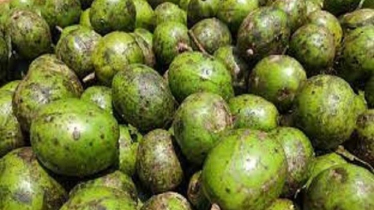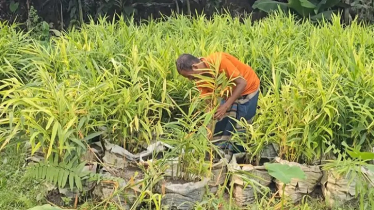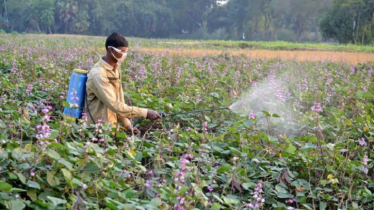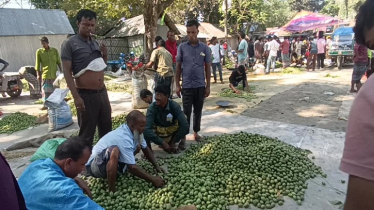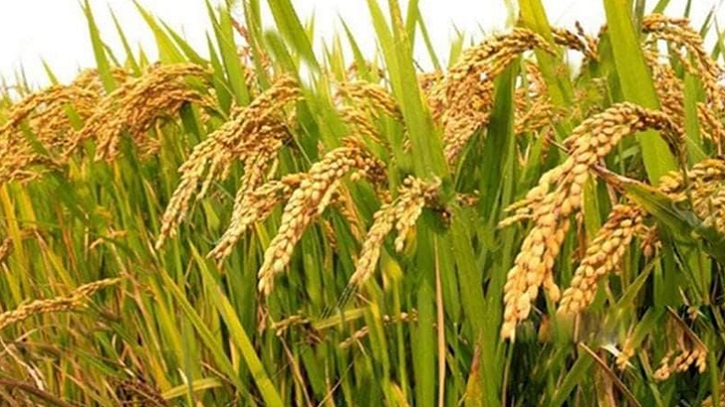
Nearly 72 to 78 percent of Bangladesh’s total arable land is used for rice cultivation, leaving little room for other essential crops such as vegetables, pulses, and oilseeds. Agricultural scientists warn that while food security has largely been achieved, ensuring nutritional security has become the country’s next major challenge. They emphasize that Bangladesh must gradually move away from rice-dominated farming toward crop diversification to achieve balanced nutrition and sustainable agriculture.
Experts suggest that if just 10 percent of the land currently under rice cultivation were allocated to alternative crops, it would significantly reduce the nation’s nutritional deficit while increasing farmers’ income. However, they also stress the need to maintain current rice production levels before shifting land use.
According to official data, Bangladesh has 16 million hectares of cultivable land, of which approximately 11.5 million hectares are devoted to rice. About 2.1 million hectares are single-crop lands, 4.1 million are double-crop, 1.86 million are triple-crop, and 23,000 hectares are cultivated four times a year. In contrast, vegetable cultivation occupies less than 1.2 million hectares, potato around 0.5 million hectares, pulses 0.7 million hectares, and oilseeds approximately 1.1 million hectares.
For decades, rice and wheat have symbolized “food security” in Bangladesh. But experts point out that true food security goes beyond filling stomachs—it must ensure adequate nutrition. While rice provides carbohydrates, excessive dependence on it leaves the population deficient in protein, vitamins, and minerals. Scientists argue that allocating even 10 percent of rice land to alternative crops could transform the country’s nutrition landscape. It would also minimize risks for farmers, as diversified cropping cushions against market fluctuations and weather shocks.
Dr. Jiban Krishna Biswas, former Director General of the Bangladesh Rice Research Institute (BRRI), has calculated that releasing 5 to 10 percent of rice land for other crops would not affect total rice output. He noted that Bangladesh currently cultivates about 5 million hectares of boro and 5.75 million hectares of aman paddy. Combined with aus cultivation, total rice coverage stands at 11.84 million hectares—1.5 times more than the country’s actual arable land, as the same fields are used multiple times a year.
“Our current yields—five tons per hectare for boro, 4.5 tons for aus, and 3.5 tons for aman—are sufficient to meet the annual demand of 42 million metric tons of rice,” said Dr. Biswas. “If we can maintain this yield consistency, reallocating 10 percent of land will not hurt production. With proper agronomic management, even 15 percent of rice land can be shifted to wheat, pulses, jute, and oilseeds.” He added that such a shift would help establish both production and nutritional balance through sustainable crop diversification.
Agricultural economists warn that Bangladesh’s overreliance on rice has reduced crop diversity and put pressure on soil fertility and water resources. Rice farming consumes significantly more water and fertilizer than other crops, causing groundwater levels to drop rapidly, especially in the northern and southwestern regions. They recommend integrating pulses, oilseeds, and vegetables into rice-based systems to improve soil health and nutrient balance. For example, legumes like mung beans and khesari enrich the soil with nitrogen, enhancing yield in subsequent rice seasons.
Dr. Mamunur Rahman, Chief Scientific Officer at the Soil Survey and Land Management Division of the Soil Resource Development Institute, noted that growing the same crop on the same land year after year depletes soil health and increases pest infestations. He emphasized the importance of crop rotation, saying farmers generally make cultivation choices based on their socio-economic conditions and environmental factors.
Nutritionists argue that agricultural diversification alone will not suffice unless people’s eating habits change. In Bangladesh, rice accounts for about 70 percent of the average person’s daily food intake, leading to excess carbohydrate consumption and protein and vitamin deficiencies. Sher-e-Bangla Agricultural University Professor Dr. Tajul Islam Chowdhury Tuhin stressed the need for dietary awareness, noting that “rice alone cannot meet human nutritional needs—people require adequate amounts of vegetables, fish, and meat.”
Masudul Haque Jhontu, Chief Scientific Officer at the Bangladesh Agricultural Research Institute, echoed this sentiment, saying that shifting a portion of rice land to vegetables and pulses would greatly enhance national nutritional security.
For families like that of Mirpur resident Hannan Talukdar, the economic impact is clear. “My family of four spends only Tk 1,000 on rice each month, but vegetables, fish, and meat cost over Tk 20,000,” he said. “Just vegetables cost about Tk 8,000. The government should focus more on vegetable production.”
Agricultural economist and researcher Dr. Jahangir Alam Khan believes the transition must be gradual. “We need to increase rice production by at least 20 percent first through high-yield and hybrid varieties and by bringing fallow lands under cultivation,” he said. “Farmers still associate food security with rice, so they cannot be easily persuaded to switch to other crops.”
He added that although Bangladesh produces over 40 million tons of rice annually, it still imports about 3.5 million tons each year. “Bangladeshis consume 180 kilograms of rice per person annually, even though 152 kilograms would suffice. When accounting for feed, wastage, and seed preservation, domestic output falls short,” he explained.
Dr. Khan emphasized that nutritional security must now be a national priority. “Each person should consume 300 grams of vegetables daily, but the actual average is only 200 grams. Expanding vegetable cultivation to unused lands could add nearly 400,000 hectares of production area,” he said. “Although official data suggest growing output of vegetables, fish, and meat, the reality on the ground is not as promising.”


